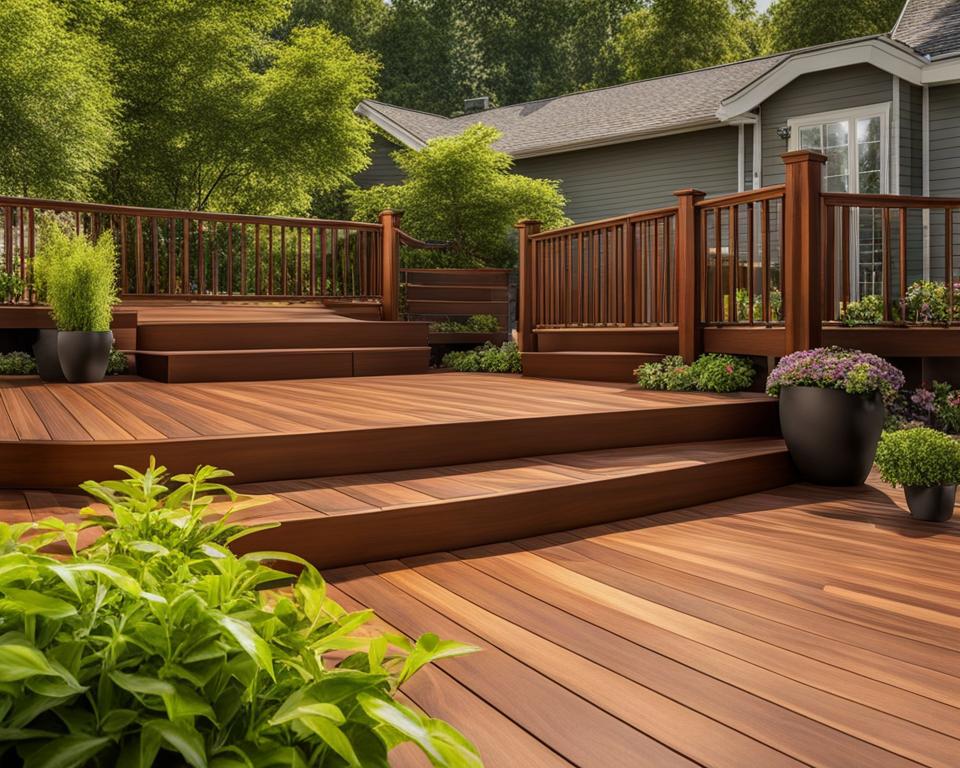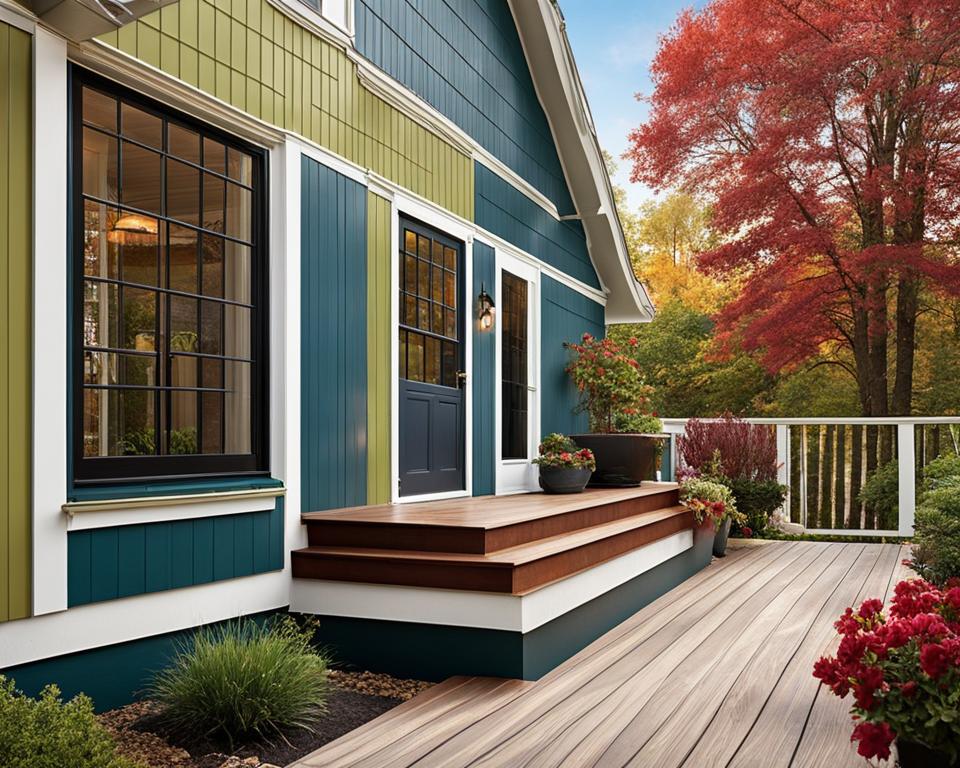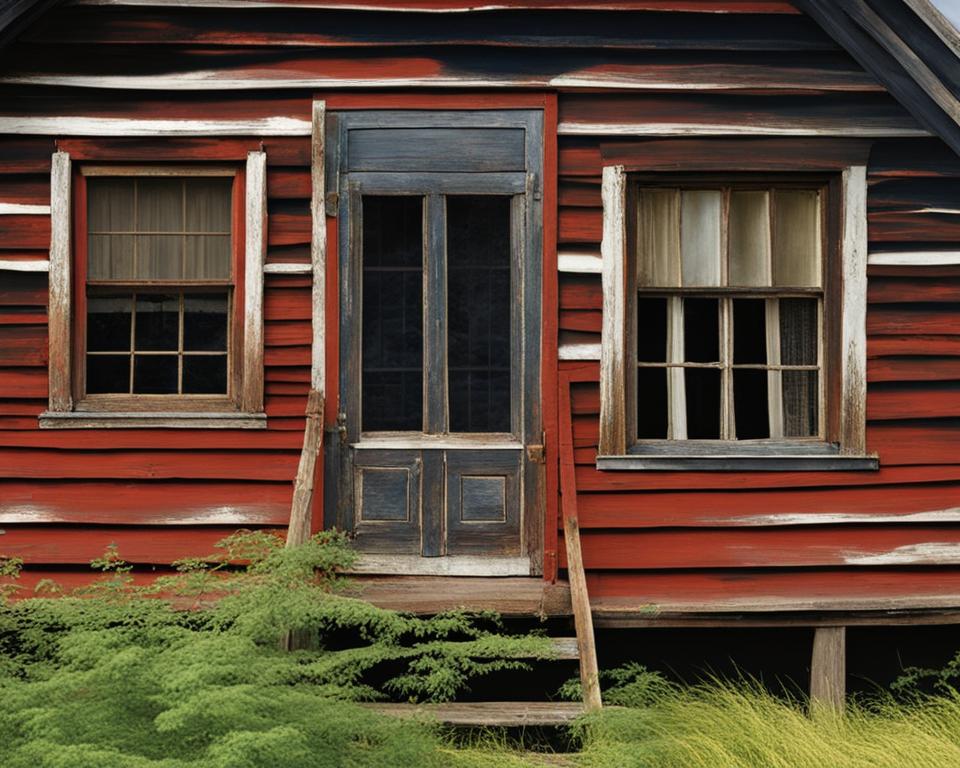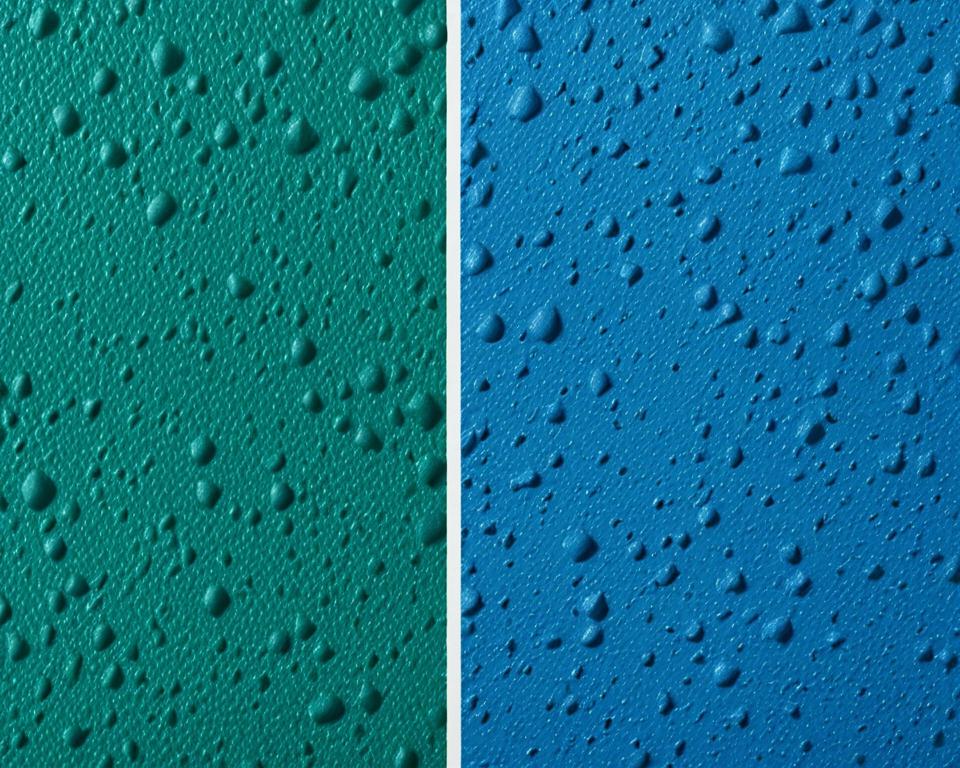When it comes to protecting your wooden deck or siding, choosing between solid stain and paint can be a difficult decision. Both options have their advantages and disadvantages. In this article, we will compare solid stain and paint, exploring the differences between the two and helping you determine which one is the best choice for your home.
Key Takeaways:
- Solid stain penetrates the wood, while paint sits on top of it.
- Solid stain preserves the natural texture of the wood, while paint provides a smooth and uniform appearance.
- Solid stain is cost-effective and requires minimal surface preparation, while paint may be more time-consuming and costly.
- Both solid stain and paint have their advantages depending on your personal preferences and the specific needs of your project.
- Consider factors such as breathability, lifespan, and color options when making your decision.
What is Solid Stain?
Solid stain is a type of finish that penetrates into the wood rather than sitting on top of it. It offers effective protection while enhancing the natural texture of the wood. Solid stain comes in a variety of colors, allowing you to choose the perfect shade for your project. Whether you prefer a bold statement or a subtle enhancement, solid stain provides versatility in color selection.
Unlike paint, solid stain allows the wood to breathe, preventing moisture build-up that can lead to cracking and peeling. This breathability is crucial for the long-term health of your wood surfaces. Additionally, solid stain is resistant to cracking and peeling, ensuring a durable and long-lasting finish.
One of the key advantages of solid stain is its cost-effectiveness. It typically requires only one coat for adequate coverage, which reduces both material and labor costs. Applying solid stain is a straightforward process, making it an accessible option for DIY projects. Whether you’re staining a deck, fence, or siding, solid stain offers a convenient and cost-effective solution.
Furthermore, solid stain maintains the natural texture of the wood, allowing its beauty to shine through. It preserves the grain and provides a transparent finish that highlights the unique characteristics of each piece of wood. If you appreciate the authentic look and feel of wood, solid stain is an ideal choice.
Here’s a quick overview of the benefits associated with solid stain:
- Protects wood surfaces
- Enhances the natural texture of wood
- Available in a variety of colors
- Cost-effective option
- Allows wood to breathe
- Resistant to cracking and peeling
To give you a visual representation of the results achieved with solid stain, take a look at the example below:
Advantages of Solid Stain for Wooden Decks & Siding
When it comes to protecting your wooden decks and siding, solid stain offers several advantages over other finishes. Whether you’re looking to enhance the natural beauty of the wood or provide long-lasting protection, solid stain is a versatile and cost-effective choice.
Here are the key advantages of using solid stain:
- Easy to Apply: Unlike other finishes, solid stain is easy to apply. Its thick formula allows for a smooth application, and it typically requires only one coat to achieve the desired result. This makes it a practical choice for homeowners and DIY enthusiasts who want to avoid complex and time-consuming processes.
- Minimal Surface Preparation: Solid stain doesn’t demand extensive surface preparation. Unlike paint, which may require sanding or priming, solid stain can be applied directly to clean, dry wood surfaces. This saves both time and effort, allowing you to complete your staining project quickly.
- Cost-Effective: Solid stain is a cost-effective solution for preserving and beautifying your wooden decks and siding. It typically comes at a lower price point compared to other finishes, making it a budget-friendly option. Additionally, since solid stain only requires one coat, you’ll save on materials and application time.
- Preserves Natural Texture: One of the standout features of solid stain is its ability to preserve the natural texture of the wood. Unlike paint, which forms a thick layer on the surface, solid stain penetrates the wood fibers, highlighting the unique grain patterns and texture. This allows the beauty of the wood to shine through, creating an authentic and visually pleasing finish.
- Breathability: Solid stain allows the wood to breathe, offering important benefits for its long-term health. By allowing moisture to escape, solid stain helps prevent issues such as rot and mold. This breathability ensures that the wood stays in optimal condition, maintaining its structural integrity for years to come.
- Resistant to Cracking and Peeling: Solid stain is designed to withstand the outdoor elements and is highly resistant to cracking and peeling. It forms a durable protective layer that shields the wood from UV rays, moisture, and other environmental factors. This resistance ensures that your wooden decks and siding maintain their beauty and protection, even in challenging conditions.
Overall, the advantages of solid stain make it an appealing choice for homeowners who want to protect and enhance their wooden decks and siding. Its ease of application, minimal surface preparation, cost-effectiveness, preservation of natural texture, breathability, and resistance to cracking and peeling make it an excellent option for long-lasting and visually appealing finishes.

Continue reading to learn about the drawbacks of staining and the benefits of using paint for your wooden decks and siding.
Drawbacks of Staining
While solid stain offers many benefits, it’s important to consider the drawbacks before making a decision. Understanding the potential downsides will help you make an informed choice for your wooden decks and siding.
Shorter Lifespan than Paint
One of the main drawbacks of staining is its shorter lifespan compared to paint. While properly applied paint can last up to ten years, solid stain typically needs to be restained every five years to maintain its color and protection. This frequent maintenance can be time-consuming and add to the overall cost of maintaining your wood surfaces.
Highlights Imperfections in Wood Texture
Another drawback of staining is that it highlights any imperfections in the texture of the wood. If your wood has noticeable flaws or unevenness, they may become more visible with a solid stain finish. This can detract from the overall appearance of your decks and siding, especially if you were hoping for a more uniform look.
Limited Sheen Options
When it comes to the finish of your wood surfaces, staining has limited sheen options. Solid stain usually comes in one flat sheen, which means you have fewer choices when it comes to different finishes or levels of shine. If you prefer a more glossy or satin appearance, paint may be a better option for achieving the desired look.
To summarize, staining has a shorter lifespan than paint, requires more frequent restaining, highlights imperfections in the wood texture, and offers limited options for different sheen levels. Considering these drawbacks alongside the advantages will help you determine whether stain or paint is the right choice for protecting and enhancing your wooden decks and siding.
Advantages of Painted Decks & Siding
Painting your decks and siding with paint offers several advantages.
- Variety of color options: Unlike stains, paint provides a wider range of color options, allowing you to choose the perfect shade for your home.
- Covers imperfections: Paint effectively covers any imperfections in the wood texture, providing a smooth and uniform appearance.
- Longer lifespan than stain: With proper application and maintenance, painted surfaces can last up to ten years, offering a longer lifespan compared to stain.
- Durable: Paint is a durable option that provides excellent protection for your decks and siding, resisting peeling, cracking, and blistering.
To visually illustrate the advantages of painting, consider the image below:

Drawbacks of Exterior Paint
While exterior paint offers many benefits, there are also some drawbacks to consider. Painting your decks and siding can be a time-consuming process, as it often requires surface preparation and multiple coats for a consistent color. This can extend the overall project timeline and may require additional effort on your part.
One of the main drawbacks of exterior paint is its higher cost compared to staining. Paint typically requires more material, which can increase the overall expense of the project. This is an important consideration, especially if you have a large area to cover.
Additionally, paint is less breathable than stain. Stain allows the wood to breathe, allowing moisture to escape and reducing the risk of long-term damage. In contrast, paint forms a solid barrier on the surface, which can trap moisture and potentially lead to issues in the future.

Conclusion
In conclusion, when it comes to choosing between solid stain and paint for your wooden decks and siding, it ultimately comes down to personal preference and the specific needs of your home. Each option has its advantages and disadvantages, making it essential to weigh the pros and cons.
If you value the natural look of wood and want to preserve its texture, solid stain is the best choice. It is cost-effective, easy to apply, and provides moderate protection. With a variety of colors available, you can still add some personalization while maintaining the natural wood aesthetic.
On the other hand, if durability and long-term effectiveness are your priorities, paint is the better option. It offers a wider range of color choices and effectively covers any imperfections in the wood texture, providing a smooth and uniform appearance. With proper application, paint can last up to ten years, offering excellent protection for your wood surfaces.
Ultimately, the decision between solid stain and paint for your wooden decks and siding is subjective and depends on your personal preferences and specific project requirements. Consider factors such as the desired aesthetic, budget, maintenance needs, and level of protection to make the best choice for your home.
FAQ
What is the difference between solid stain and paint?
Solid stain penetrates into the wood, preserving its natural texture, while paint sits on top of the wood, providing a smooth and uniform appearance.
What are the advantages of using solid stain for wooden decks and siding?
Solid stain is easy to apply, requires minimal surface preparation, is cost-effective, preserves the natural texture of the wood, allows it to breathe, and is resistant to cracking and peeling.
What are the drawbacks of staining?
Staining has a shorter lifespan compared to paint, typically requiring restaining every five years. It also highlights any imperfections in the texture of the wood and offers limited options for different finishes or sheens.
What are the advantages of painting decks and siding?
Painting provides a wider range of color options, effectively covers imperfections in the wood texture, has a longer lifespan than stain, and offers durability and excellent protection for wood surfaces.
What are the drawbacks of exterior paint?
Painting decks and siding can be time-consuming, requiring surface preparation and multiple coats. It can also be more expensive than staining and is less breathable, potentially trapping moisture in the wood.
